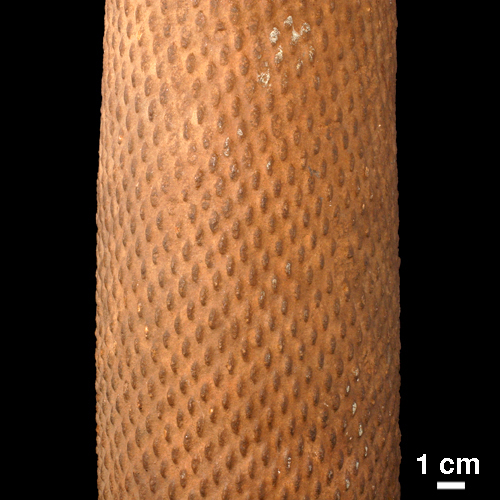
Fossils of lycophytes are among the most common plant fossils reported in Oklahoma; one fossil, called Stigmaria, represents about half of all plant fossils brought to the Museum for identification by our staff. Lycophyte fossils may be found in rocks that were deposited during both the Pennsylvanian and Permian Periods, but are most commonly associated with coal seams (above, below, or in) where preservation occurred as impressions, compressions, casts and molds.
Lepidodendron (Knorria)
Lepidodendron is the name (= form-genus) for impressions of the outer bark of large arborescent lycophytes.
Lepidodendron is also the name that paleobotanists use to refer to the biological genus for entire plant, including all of its individual parts. Lepidodendron grew to over 100 feet (30 meters) tall and preferred the wetter, but not wettest areas in swamps.
Lepidodendron is recognized by the diamond-shaped pattern of leaf scars that spiral around the trunk of the tree; each scar being generally taller than wide.
During the life of the tree, the outer bark of Lepidodendron trees would be shed revealing the layer beneath This inner bark layer displayed a different pattern and is given a separate and distinct name, called Knorria, when found in the fossil record.






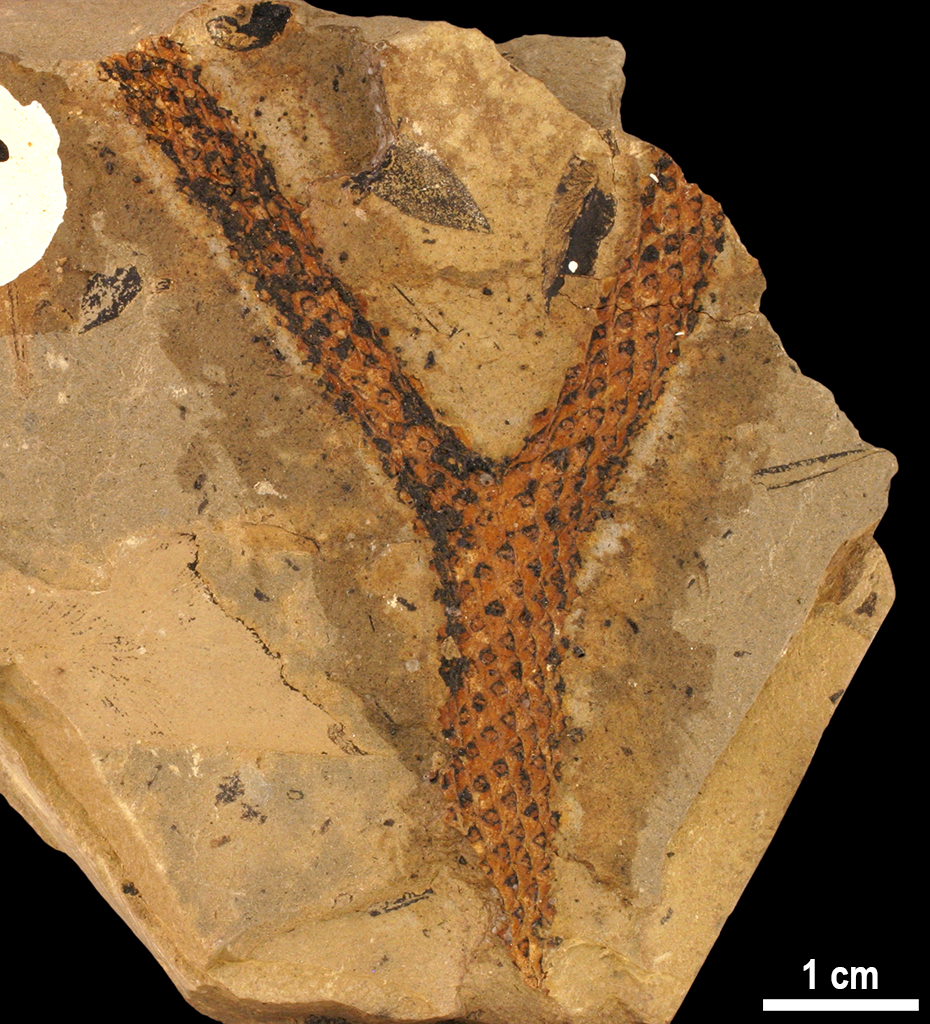

Sigillaria
Sigillaria is the name (= form-genus) for impressions of the outer bark of large arborescent lycophytes, as well as for the entire tree. Sigillaria was a shorter tree than Lepidodendron and had a different shape; Sigillaria grew in the drier parts of the swamps. Commonly found in Pennsylvanian rocks, Sigillaria is also the only lycophyte bark found in Permian rocks although very infrequently. Sigillaria is recognized by the hexagon-shaped to near circular pattern of leaf scars that appear to be lined up vertically one above another.
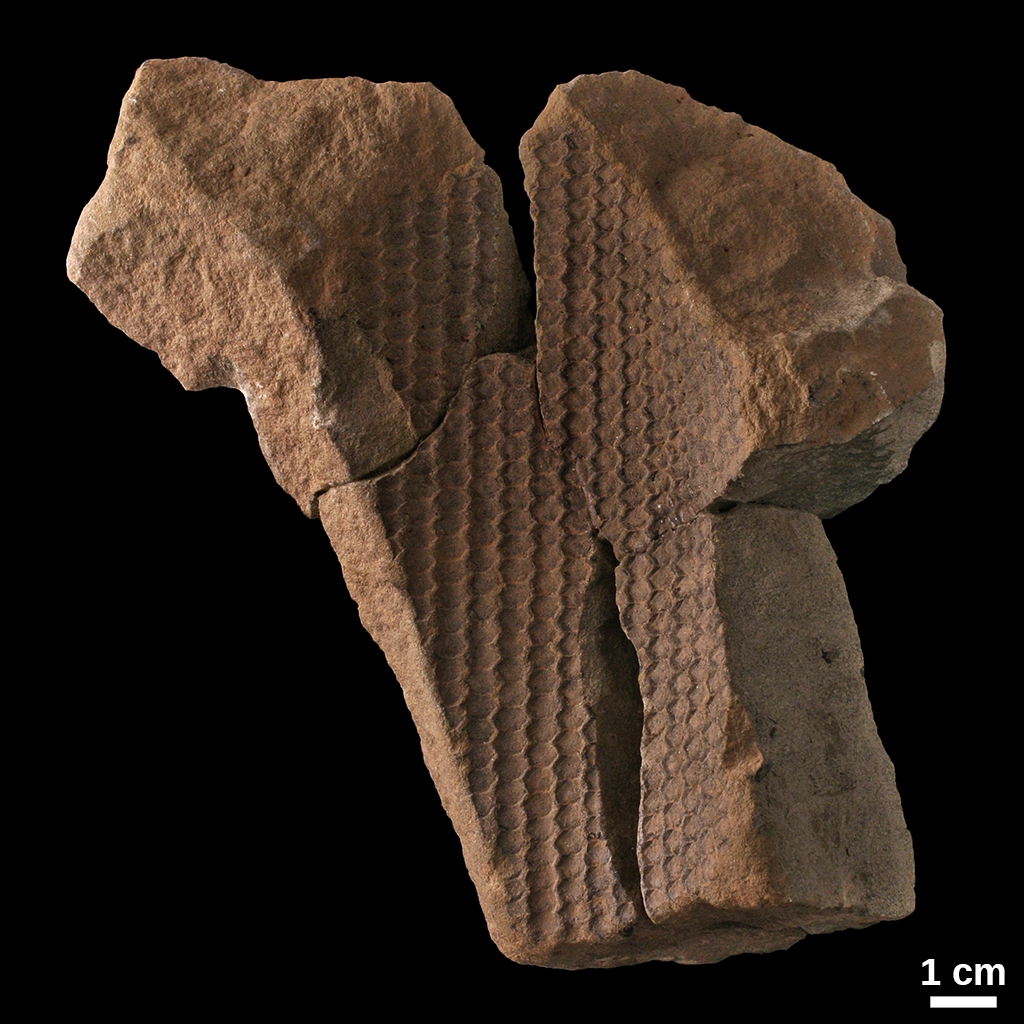





Stigmaria
Stigmaria is the name (= form-genus) given to rooting systems of all of the arborescent lycophytes (including Lepidodendron and Sigillaria). Stigmarian axes are very common in Pennsylvanian rocks and are among the most frequently reported in Oklahoma. Stigmarian axes are most often found as cylinders with dimples spiralling around the entire surface. The dimples may appear to have a button inside. Sometimes, slender roots can be seen in place of the dimples on exceptional specimens.

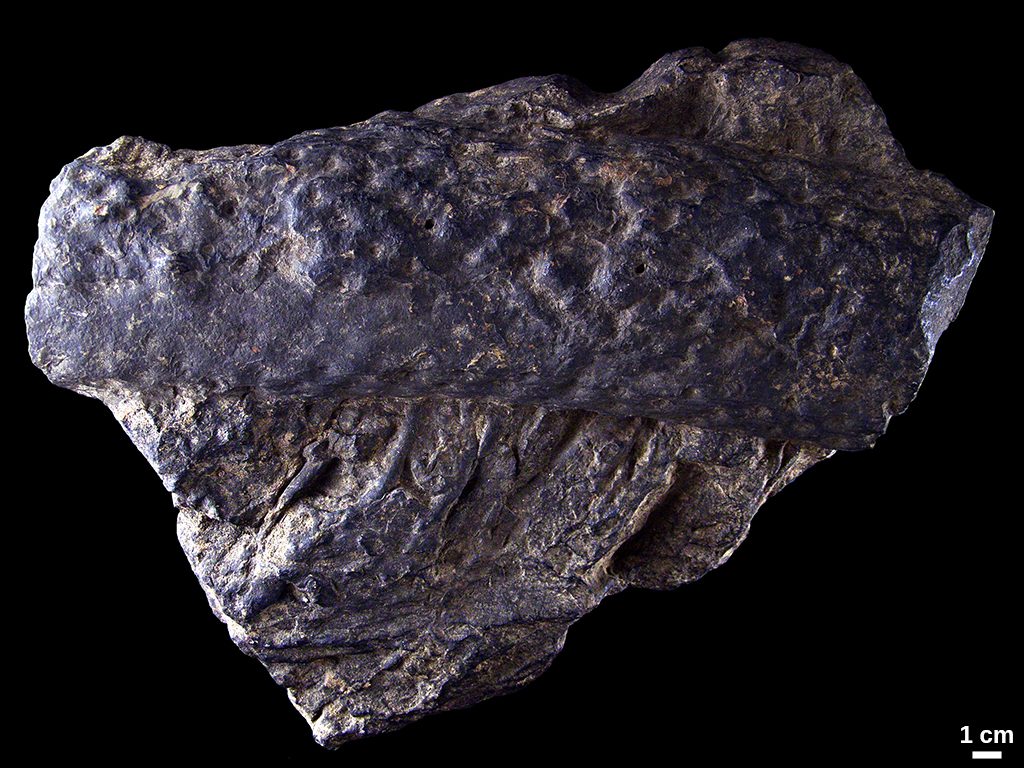




Lepidophylloides
Lepidophylloides is the name (= form-genus) given to dispersed leaves of arborescent lycophytes. Although it is sometimes possible to distinguish between leaves of the different genera (that is, of Lepidodendron and Sigillaria), it is not usual and so this name is practical for all leaves of uncertain origin.
Lepidophylloides is characterized by long, straight sides with a single, prominent vein running down the middle. In some better preserved specimens, two usually fainter lines appear on each side of the central vein and represent grooves that are located on the underside of the leaf. Lepidophylloides may be distinguished from the other genus of parallel-sided leaf in the Pennsylvanian (Cordaites) by its single central vein with at most two additional lines running beside it.


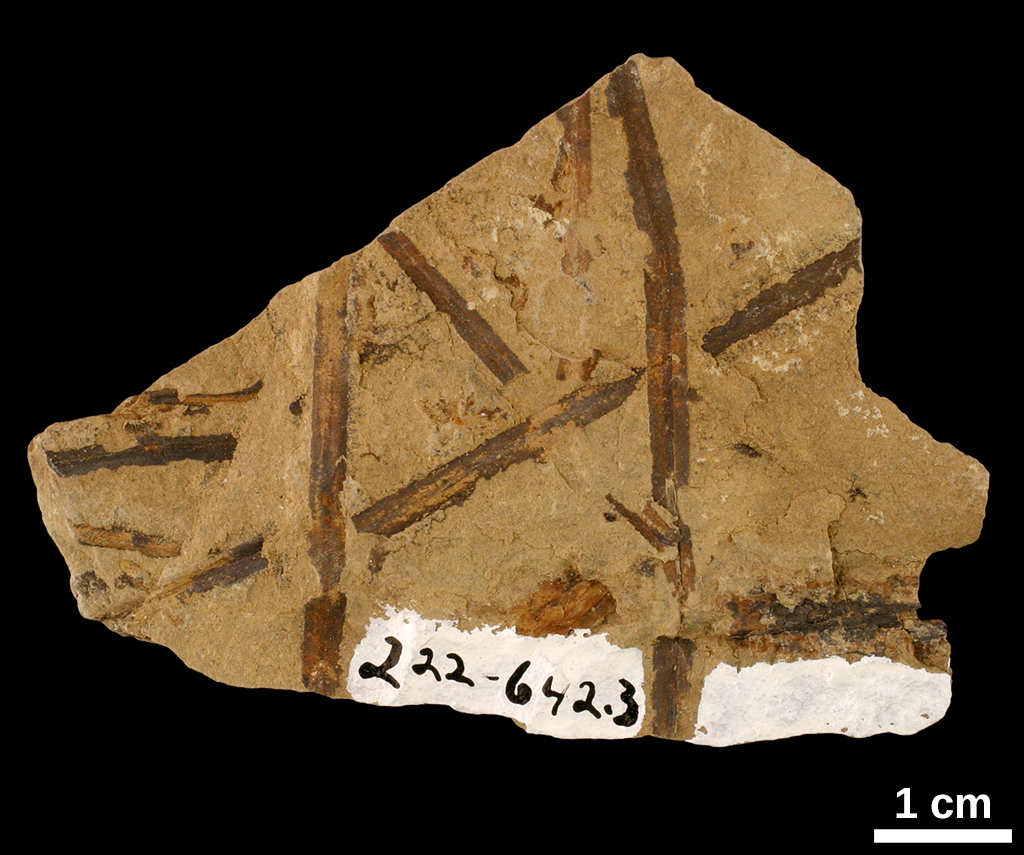

Lepidostrobophyllum & Lepidostrobus
Lepidostrobophyllum is the name (= form-genus) given to the fertile leaves that make up the cones of numerous species of the genus Lepidodendron. Lepidostrobophyllum is usually found incomplete, preserving only the outer leaf but not preserving the spores themselves. The entire cone, if found with numerous Lepidostrobophyllum intact, would be called Lepidostrobus.






Sigillariostrobus
Sigillariostrobus is the name (= form-genus) for cones of Sigillaria and is rare in Oklahoma.




